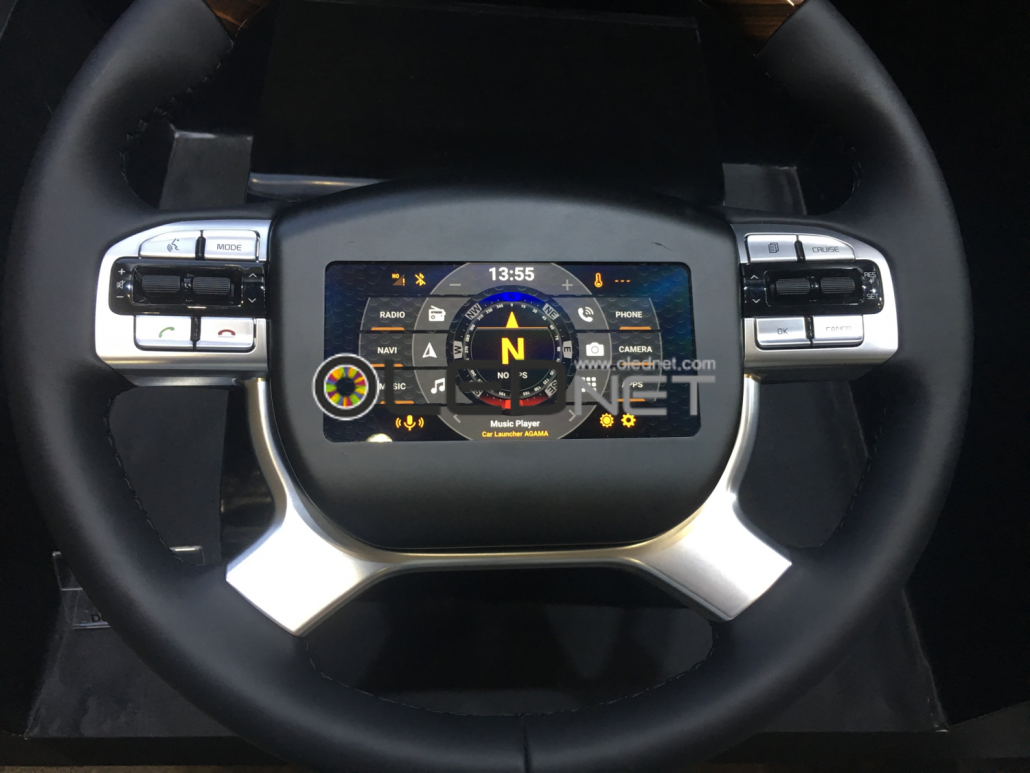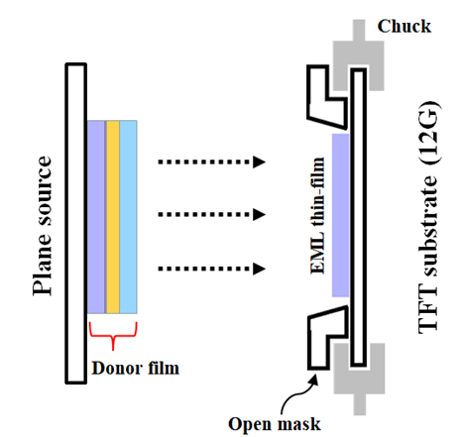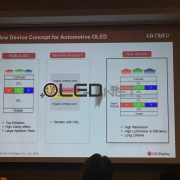LG Display and Samsung Display introduced a number of applications using OLED at IMID 2018 held in BEXCO, Busan, drawing attention from many visitors. In particular, LG Display displayed its strategies mostly for large OLED applications such as 77-inch transparent OLED and 55-inch video wall OLED, while Samsung Display introduced the small and medium sized OLED applications mainly for automotive and virtual reality devices.
First, the panel thickness of the 77 inch transparent flexible OLED introduced by LG Display is 400 μm, the bending radius is 80 mm, and the luminance is 200 nit based on full white.
LG Display explained that it would improve the required transmittance and durability. Also, it commented that the goal is to reduce bezel to 0.5 mm at its display of 4 FHD OLEDs with 3.8 mm bezel.

In addition, LG Display presented a 1200ppi 4.3-inch WRGB OLED for virtual reality devices. One official explained that WRGB OLED, which represents the resolution by etching the color filter, would be advantageous for higher resolution than RGB using the deposition method.
Meanwhile, Samsung Display exhibited a number of automotive OLEDs, including unbreakable OLED for 6.22 inch steering wheel, 1000R curved OLED for passenger monitor, transparent OLED for HUD, S-curved OLED for CIO and rollable OLED. The concerned official expects the OLED to be widely applied to inside automobiles because it has excellent design autonomy, compared to LCD.


He added “Although there are many things to be improved, such as brightness and reliability, it is continuously improving the required performance through the feedback from European customers”.
Furthermore, Samsung Display showcased light field display and 2,000ppi resolution RGB OLED for virtual reality devices.























